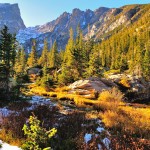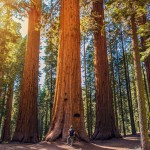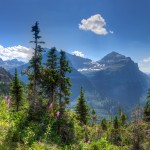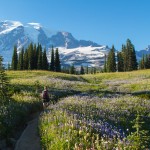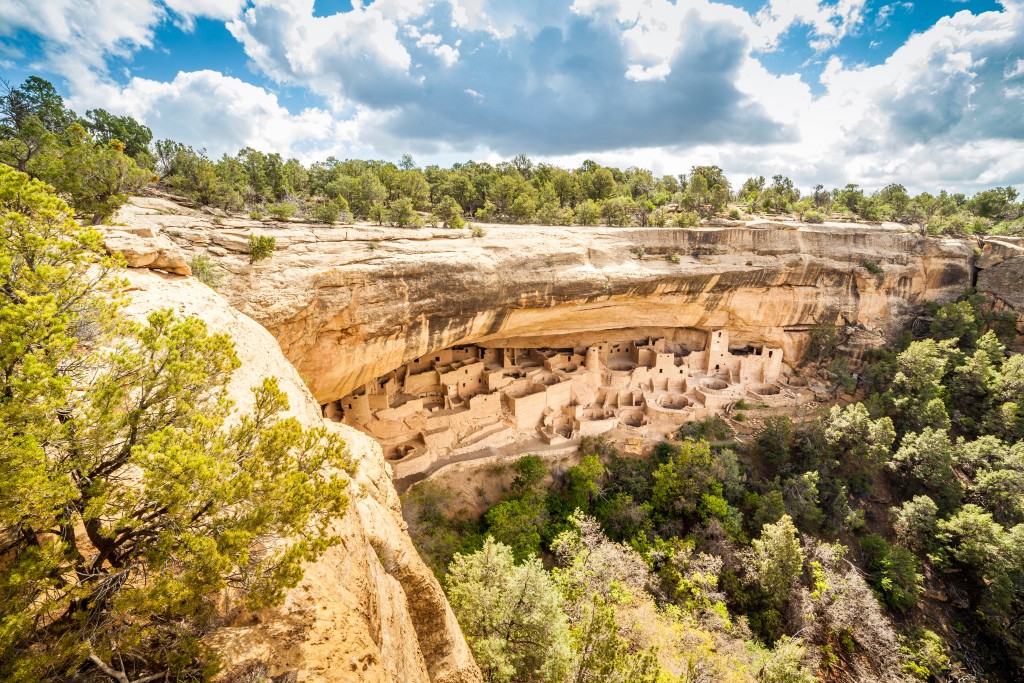Wind Cave National Park- A Unique Treasure
This, the sixth smallest of all American National Parks, is the fourth longest cave network in the world and the first network anywhere on the planet to have been granted National Park status (1). Located in South Dakota, it was signed into law in 1903 by Teddy Roosevelt in recognition of its unique status as being one of the densest systems on the planet.
Exploration is incomplete, and every year more and more caves and passages are discovered, opening up this important natural feature. There are extensive rock formations below ground and unique features inside that warrant protection all on their own that are of particular interest to geologists. Above ground, the park has one of the most extensive areas of mixed grass prairie anywhere in North America so it is treasured and protected as much for what is above ground as what lies beneath the surface. There is also a large area of pine forest which is home to native plant and animal species that you can commonly expect to find in this type of landscape in South Dakota (2); the National Park is just ten miles from the city of Hot Springs.
The reason it is called “The Wind Cave” is that air pressure builds up inside and is forced out of its labyrinthine tunnels until it reaches the surface (3). This happens with all caves but is more noticeable the larger the network. As one of the largest networks in the world, Wind Cave has a noticeable “exhale” at it entrance.
History of Wind Cave National Park
Studies of the social history of the park has revealed that early Native American tribes knew about the extensive cave system beneath the surface, but surprisingly the NPS has yet to discover any evidence whatsoever that anybody ever entered it – let alone settled there (4) though there is certainly archaeological evidence within the park. We do know that the caves were sacred to ancient tribes with an elaborate creation myth centered on the site (3).
Exploration of the wind cave began relatively late in 1881 with no serious investigation for another ten years when South Dakota Mining Company staked a claim to it. The mining did not go as planned and the man responsible for assessing the claim realized its natural wonder; instead, he set up a business dedicated to tours and selling some of the rock formations from the cave (4). A homestead application was made and permitted. Following this, some of the tunnels were enlarged and made suitable for human entry. His son vowed to find the ends of the tunnels but after around 1890 after nearly two years, he gave up (5); today, we are still finding new tunnels and passages.
A hotel was constructed near the site, staircases were installed in the caves and other modifications made. Feud broke out between the interested parties all wishing to capitalize on the growing tourist trade and eventually, the government stepped in to investigate. It was eventually decided that there was no legal claim to the site by either party and the homestead license was withdrawn in 1901 (4) – this was the first step on the road to the Wind Caves becoming the next National Park which would come into effect two years later. At the time, there were no large herds of animals – and certainly not the bison for which the park is now famous (it is one of only a few genetically pure herds in North America). They arrived in 1912 when the American Bison Society evaluated several sites for the conservation herd and settled on the above-ground prairie of Wind Cave National Park (4). Over the coming years, both elk and pronghorn would arrive, giving the park the animals that make it famous today.
The 1930s saw much development of the park, the Civilian Conservation Corps improved access and entrances, installed more stairs and encouraged greater interest in public involvement in conservation. It was also during this period that the nature reserve above ground was joined with the National protected area below ground, creating the modern Wind Cave National Park (4).
The Flora of Wind Cave National Park
The Park is home to a number of grasses and wildflowers; it is recognized as a nationally important prairie. Visitors to the park will see such native plants as ponderosa pine, sego lilies, purple coneflowers and sunflowers in amongst the various grasses (6); there are even some native cacti. Trees include common types of apple tree, native elm, oak, ask and other species typical of temperate and sub-tropical ecologies (7). This relatively small area has an abundant array of life in woodland and prairie, which is why it is considered particularly delicate and in need of protection.
Yet it is the abundant grasses the draw the amateur botanist, nature lover and biological researcher alike. There are 13 types of tall grass, 25 types of mid-level grass and some 13 types of short grass (6); together, they represent a broad range of annuals and perennials, invasive and native, tufts and sods, and warm and cool season grasses. Red Threeawn is a native short grass species, though most commonly found in Utah it is found across the US. It is poor nutrition for most animal plants and useless as winter fodder. It is also known to cause irritation in the mouths of animals that attempt to eat it; therefore, it is not presently at danger and is a common site in Wind Caves National Park (8) yet it is an important part of the ecosystem.
Conserving Native Flora
Wind Cave National Park can be considered a success story for the conservation of native fauna – particularly the previously mentioned bison, pronghorn and several types of elk. Yet it was also the focus of a poorly-understood problem. These populations led to over-grazing due to the lack of predators at the time of promoting those native populations, we now know that that put many plants as well as the wider ecology at risk (4). In the 1960s, several predator species were introduced to maintain the fauna species from starvation and also to prevent over-grazing or damage to native vegetation. Today, predators such as coyote and prairie dogs control herbivore population an aid in the protection of types of protected vegetation as well as conserving the prairie as an ecosystem (2).
For the last few decades, the National Park Service has had a programme of regular and controlled fires to protect the prairie from aggressive forest expansion (4) – a battle that until then the forest seemed to be winning. Survival of the site and many species hinges on keeping that delicate balance between the differing and varied landscape types.
Tentatively, it seems that Wind Caves National Park has one of the best levels of protection of native species – thanks perhaps in part to the size of the park and proactive conservation efforts. As far as seed collecting and preservation is concerned, it has been identified as a natural site with large areas of natural habitat conducive to populations of native species (9), particularly of the prairie itself. This demonstrates that all elements – the conservation efforts of keeping forest at bay while promoting the right kinds of flora and fauna, have made this one of the best kept parks in the US today.
That’s not to say that it doesn’t have threats from non-native species. Canada thistle, leafy spurge and horehound are spreading aggressively at Wind Caves and often out-compete some native species for water, nutrients and sunlight. This can upset the ecology and in cases where they are inedible or have low nutrition value for herbivores, threaten to upset the ecology and the present makeup of the prairie (10).
The Fauna of Wind Cave National Park
Above, we mentioned the thriving populations of pronghorn, elk and especially the bison – which represent genetically undiluted lines. These are some of the most purebred bison anywhere in North America today and their installation at Wind Caves has been a success. The presence of forest, prairie and cave systems means that the fauna population is fairly diverse including amphibians, reptiles, birds, mammals, insects (including many species of arachnid) (11).
The pronghorn is a peculiar western to central North American type of antelope. Fulfilling similar ecological roles as antelope in Europe and the rest of the Old World, it is one of only a few native antelope of the continent. They first came to public attention with the Lewis & Clark Expedition when they visited South Dakota. Over the next few decades, they quickly found themselves on the road to extinction – but a growing interest in nature conservation saved them and they now exist in nature reserves all over the central states (12). The story is repeated for threatened species of elk and bison, with both following problems of exploitation, threatened status and eventual conservation.
Within the caves, the ecology includes insects and bats, fish and other species native to such geological features. As we will see below, there is a significant threat to the bats of the caves and the wider national park.
Protecting Native Animal Species
The lack of introduced predator species for the conserved animal species became apparent in the 1950s and 60s (4) as researchers came to understand the need to keep an ecology such as Wind Caves in check. Today, after a careful research plan, there are coyote and prairie dogs (2) in the park – predators for which those introduced species are natural prey. As an extension of that, black-footed ferrets have also been reintroduced; this little-known predator has been vital to keeping population control over the prairie dogs which otherwise would not have any other predator. This measure has worked two-fold as the black-footed ferreted is itself an endangered species (14). Most of these introduction efforts were taken after a realization that previous planning efforts had not taken full consideration of the requirements of the park and the animal and plant species that rely on predation (13). Today, we have a better understanding of the concept of the balance of nature, and what it means for planning efforts.
In many countries of the western world including the United States, most bat species are protected as they are threatened. Successive governments have introduced legislation to help protect them from human disturbance with a large degree of success. You may even purchase bat boxes to help in their conservation. However, human habitation is not the only threat to bats. In North America today, many already-threatened species are falling to a disease called White-Nose Syndrome. In 2012, USFWS estimated that around 6.5m bats had already succumbed to the disease (15, p53-). The name refers to a white fungal growth that appears on their noses; it causes infected bats to become disoriented, fly around outside during the day, and cluster near cave entrances where they may be at risk of predation. The number of sick, dying and dead bats suffering the disease has been described as “alarming”. Simply losing one element of an ecology such as the bat can be of serious concern.
Ongoing Conservation Challenges Challenges of Wind Cave National Park
While the park seems to be largely harmonious and well-managed, there are several external threats to the ecology of Wind Cave National Park. The proposed new wave of coal-fired power plants has put the area in the Top 10 list of most threatened National Parks in the USA (16). So far, the high air quality levels have made conservation of Wind Caves relatively easy compared to some others where there has been a constant battle to maintain air integrity; however, visibility across the park is already registering signs of decline and air quality dropping. National Park Service management are monitoring the situation.
Surprisingly, what goes on above ground can affect what happens beneath the ground (2). Water seeps through soil and rock and into the caves, creating and maintaining the ecology below the ground – indeed, this is often one of the reasons the caves were formed in the first place. Any changes to the ecology, especially to the amount of precipitation in the environment, can upset the balance below ground and the plants and animals that live there. To protect and preserve the caves, Park Rangers must take care of the ecology above the ground. The rare boxwork geological formations, for which the cave system is best known, could be threatened by any alteration to the ecosystem (16).
Invasive species are always a problem at our National Parks and Wind Caves is no exception; similarly with animal disease though with such a large bat population, the concern is that this particular park will be adversely affected right across the ecology unless something can be done about white-nose syndrome.
Finally, we have the massive potential problems of climate change. As ever, there are uncertainties and though it is believed that some species will benefit, these will be vastly outweighed by the animal and plant losses and the imbalance we expect to see on the prairies and in the forest (17). Ponderosa pine, for example, is drought resistant – other species are not expected to fair as well as this native species. Wind Cave has been subject to a modeling programe and study with projected model scenarios attempting to predict what would happen to the part and others like it in the result of catastrophic climate change and what may be done to mitigate it in ecologically sensitive areas (18).
Sources
(1) http://www.npca.org/parks/wind-cave-national-park.html
(2) http://www.nps.gov/wica/learn/nature/index.htm
(3) http://www.sioux.org/index.php/main/inner/sioux/lakota_sioux_creation_myth_wind_cave_story
(4) http://www.nps.gov/wica/learn/historyculture/learning-about-the-park.htm
(5) http://www.nps.gov/wica/learn/historyculture/alvin-mcdonalds-diary-text.htm
(6) http://www.nps.gov/wica/learn/nature/plants.htm
(7) http://www.nps.gov/wica/learn/nature/treesandshrubs.htm
(8) http://www.nps.gov/wica/learn/nature/seed-study-prairie-restoration.htm
(9) https://pubs.er.usgs.gov/publication/70043344
(10) http://www.nps.gov/wica/learn/nature/animals.htm
(11) http://animaldiversity.org/site/accounts/information/Antilocapra_americana.html
(12) https://www.jstor.org/stable/3801715?seq=1
(13) http://www.defenders.org/black-footed-ferret/basic-facts
(14) http://www.nps.gov/wica/learn/nature/upload/FINAL-WILDLIFE-REPORT-5_1_12.pdf
(15) https://d2k78bk4kdhbpr.cloudfront.net/media/content/files/KingClimatechangeTalk2.pptx_Read-Only.pdf
(16) http://consbio.org/products/reports/vegetation-projections-wind-cave-national-park-three-future-climate-scenarios







